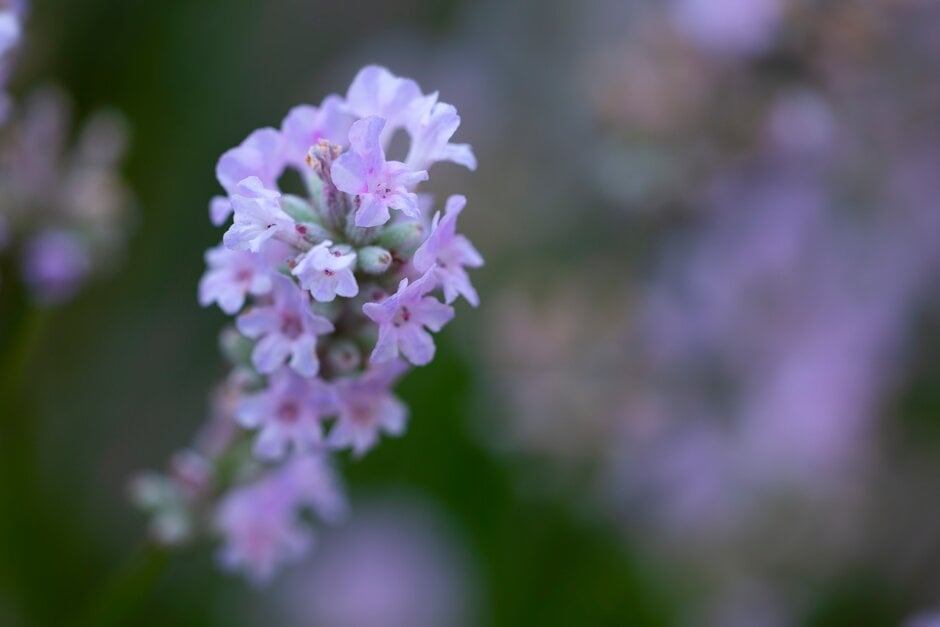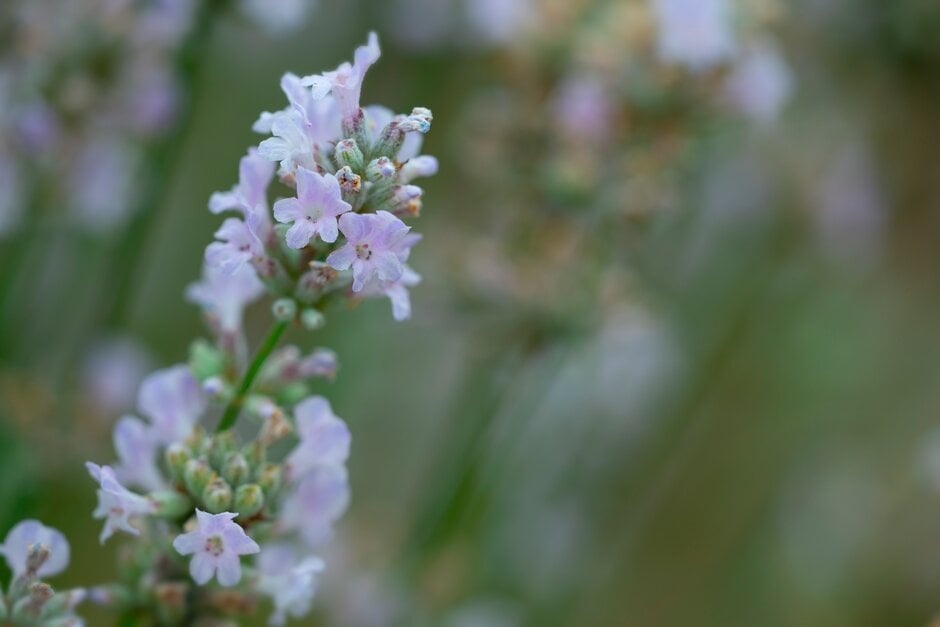Lavandula angustifolia Little Lottie ('Clarmo')

English lavender [Little Lottie]
A dwarf evergreen shrub to 30cm, with narrow, dark grey-green foliage and short spikes of pale pink flowers in summer
Size
Ultimate height
0.1–0.5 metresTime to ultimate height
2–5 yearsUltimate spread
0.1–0.5 metresGrowing conditions
Moisture
Well–drainedpH
Acid, Alkaline, NeutralColour & scent
| Stem | Flower | Foliage | Fruit | |
| Spring | Grey Silver Green | |||
|---|---|---|---|---|
| Summer | Pink | Grey Silver Green | ||
| Autumn | Grey Silver Green | |||
| Winter | Grey Silver Green |
Position
- Full sun
Aspect
West–facing or East–facing
Exposure
ShelteredDrought resistance
Yes Hardiness
H5Botanical details
- Family
- Lamiaceae
- Native to GB / Ireland
- No
- Foliage
- Evergreen
- Habit
- Bushy
- Genus
Lavandula are small aromatic evergreen shrubs with usually narrow, simple, entire, toothed or lobed leaves and small tubular flowers in dense spikes in summer
- Name status
Trade
How to grow
Cultivation
Prefers a well-drained neutral to alkaline soil but tolerates acidic conditions. In heavy soil improve drainage as lavender does not tolerate waterlogging. Potash will encourage flowering but high nitrogen fertilisers and manure will result in floppy plants. See lavender cultivation for further advice
Propagation
Propagate by semi-hardwood cuttings, may not come true from seed
Suggested planting locations and garden types
- City and courtyard gardens
- Cottage and informal garden
- Gravel garden
- Patio and container plants
- Wildlife gardens
- Rock garden
- Mediterranean climate plants
- Garden edging
- Banks and slopes
- Flower borders and beds
Pruning
Pruning group 10, after flowering
Pests
May be susceptible to rosemary beetle and cuckoo spit (froghoppers)
Diseases
May be susceptible to grey moulds (Botrytis) and honey fungus (rarely)
Get involved
The Royal Horticultural Society is the UK’s leading gardening charity. We aim to enrich everyone’s life through plants, and make the UK a greener and more beautiful place.

